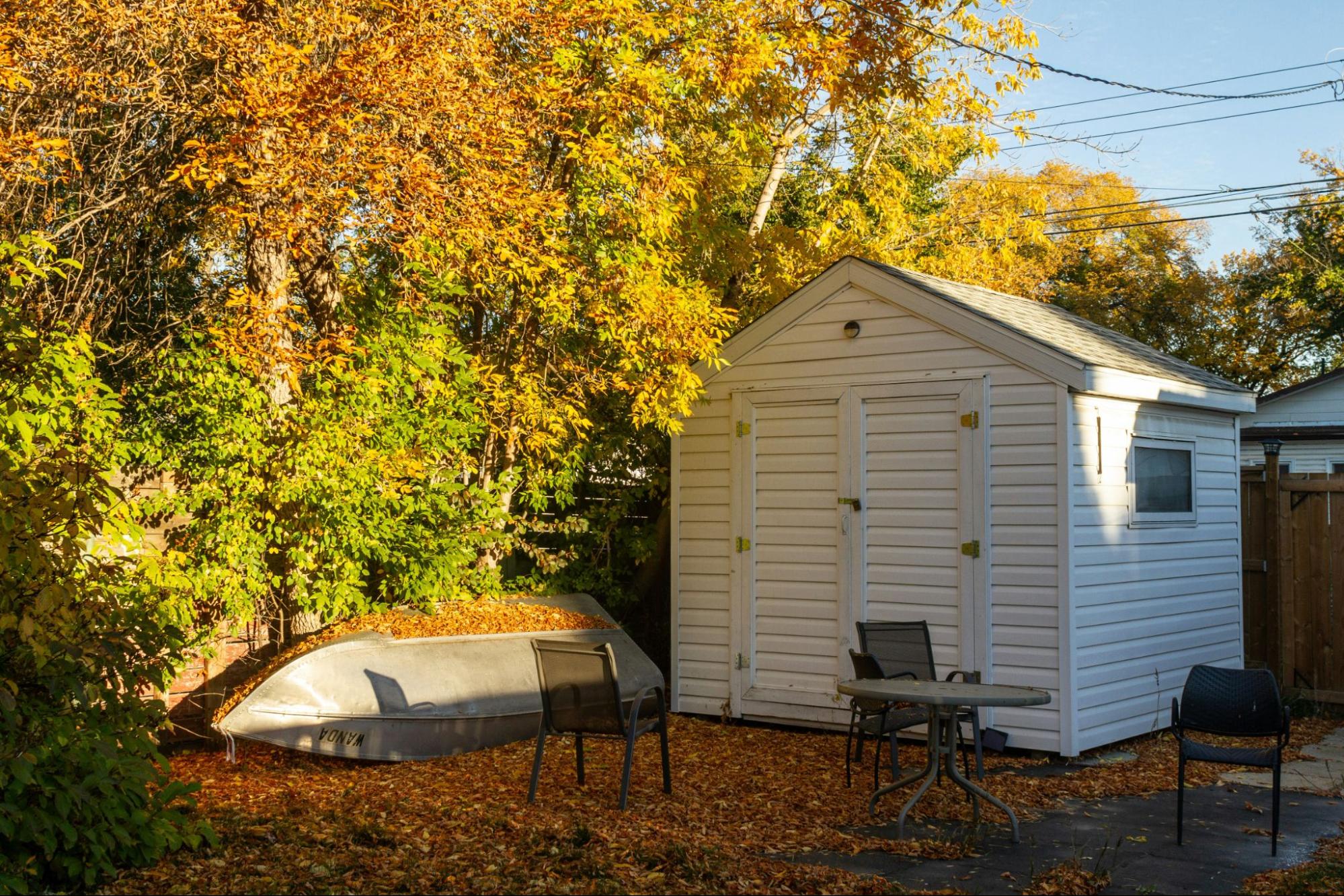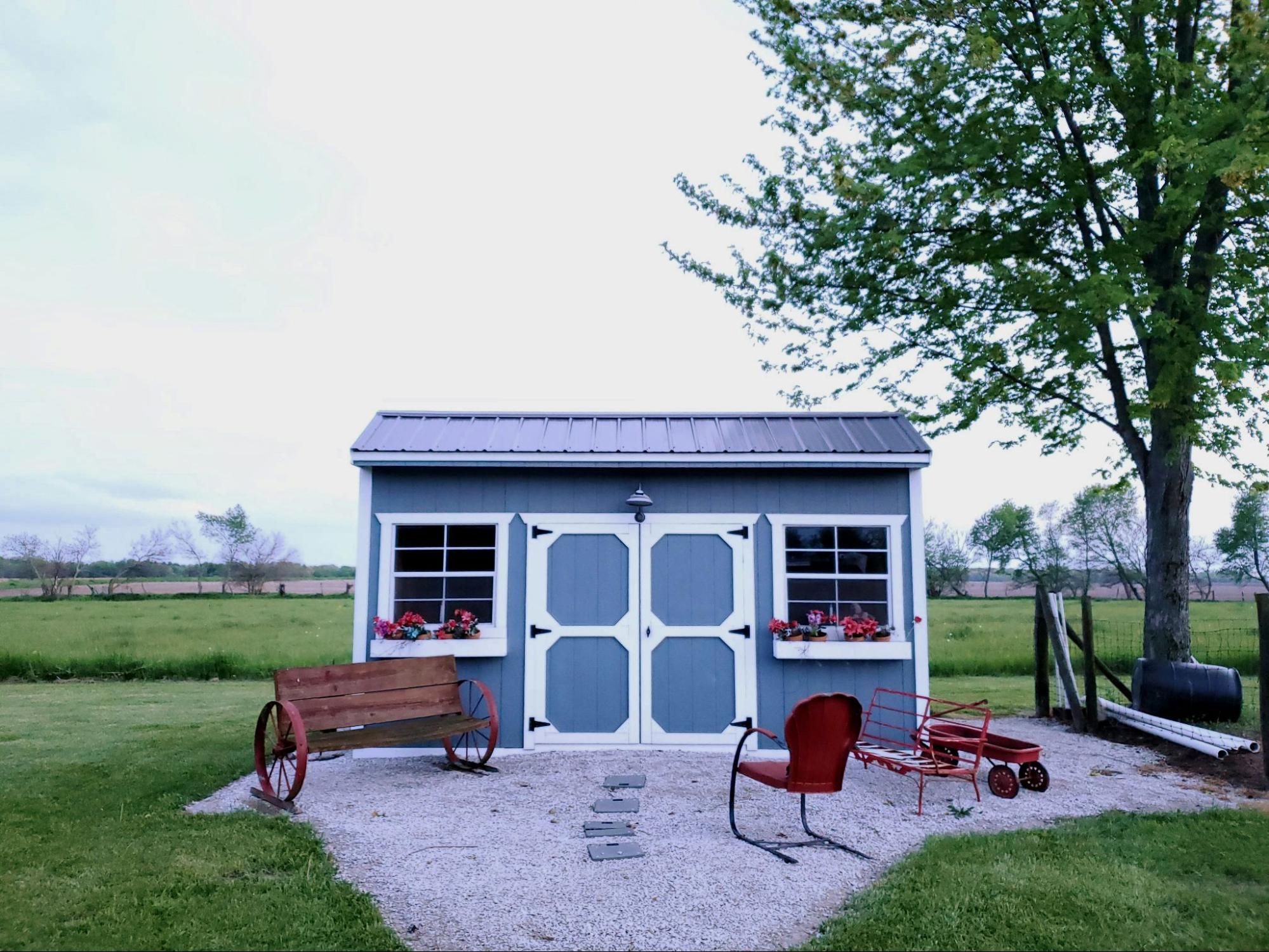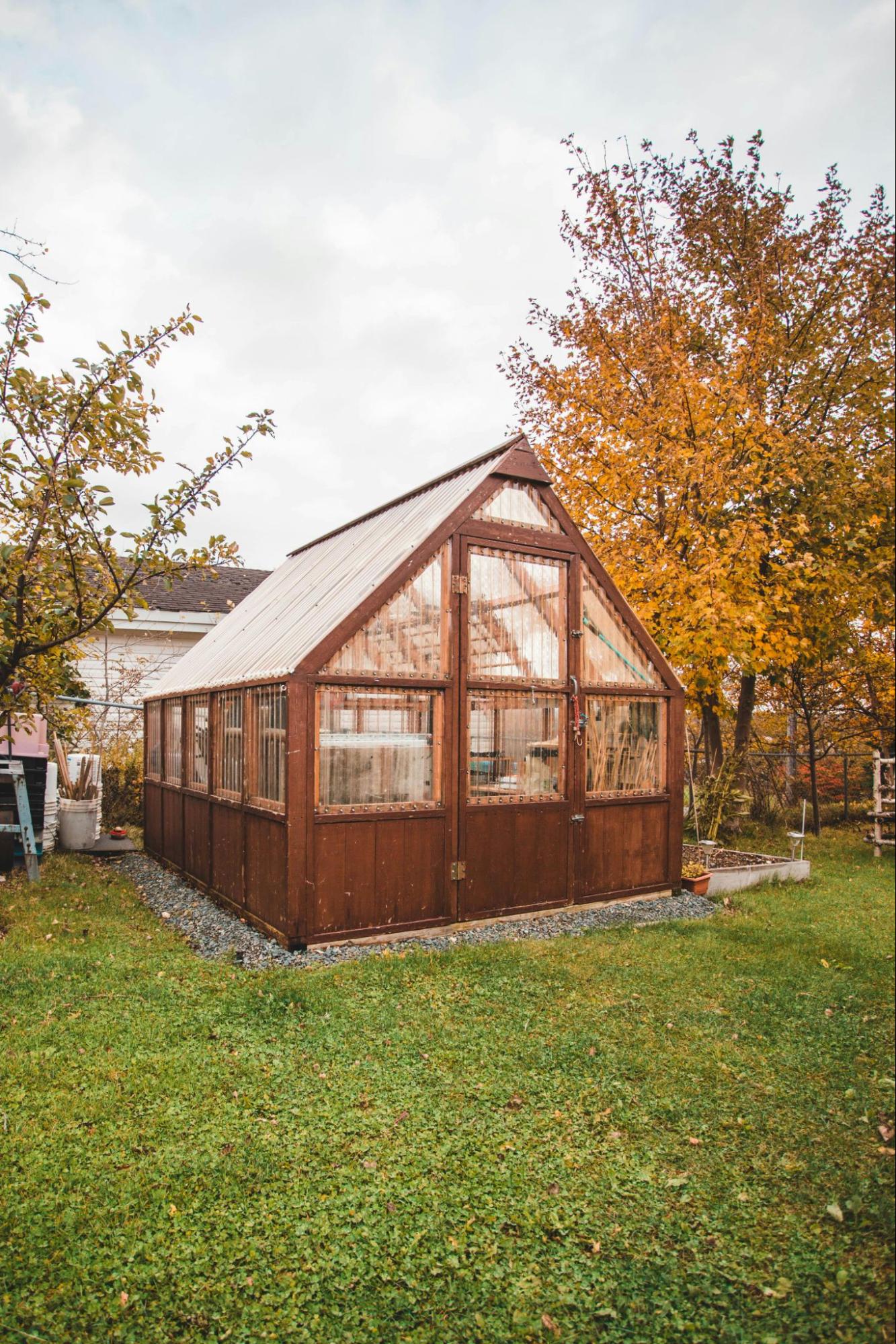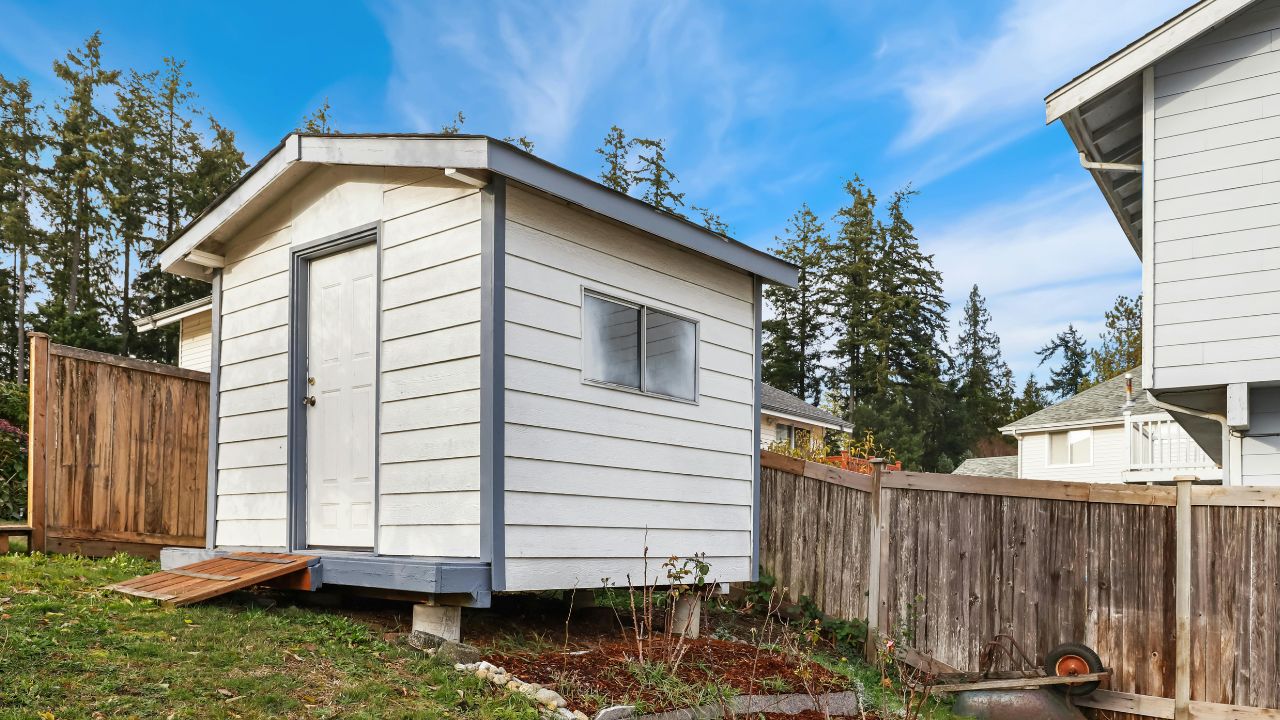In Canada, where outdoor spaces are often used year-round, having a dedicated structure for storage or hobbies is not just convenient; it’s essential.
A shed can be one of the most practical additions to your property.
Whether you’re looking to store tools, create a garden workspace, or simply add functionality to your backyard, having a shed provides the perfect solution.
However, when it comes to finding the ideal shed, there's no one-size-fits-all solution. The right choice can enhance your property’s value and functionality and the wrong choice can cost you lots of money and time.
This guide will help you understand the different types of sheds, their benefits, and how to choose the perfect one for your needs.

Why Add a Shed to Your Backyard?
Something happened during the pandemic that changed how people think about their outdoor spaces.
Maybe it was working from home and realizing how much stuff we actually own, or maybe it was spending more time in our yards and wanting them organized. Suddenly, everyone wanted a shed.
The problem is, most people had no clue what they actually needed.
Having a shed solves multiple problems at once.
- It creates dedicated space for seasonal items like snowblowers, bicycles, or patio cushions that were cluttering up basements and garages, freeing up indoor space.
- A well-built outdoor shed keeps tools, equipment, and supplies safe from weather damage, pests, and theft.
- A stylish garden shed or backyard shed can even add property value if done right, improving curb appeal and increasing resale value.
- It creates a dedicated space for hobbies such as woodworking, potting plants, or DIY projects, and provides you with a workspace as well.
But the perfect storage shed for your situation might not be what you initially think you need. Size, placement, materials, and intended use all affect what works best for your specific circumstances.
Popular Types of Sheds in Canada
Storage Sheds
The most common type, a storage shed, is designed for keeping tools, equipment, and seasonal items organized.
They come in various sizes, from compact small sheds to large outdoor storage sheds that can hold multiple bicycles, garden tools, and even snow equipment.
Small works great for basic tool storage or when space is tight. It’s cost-effective, manageable, and holds all your items.
But if you've got riding mowers, bikes, holiday decorations, and lawn supplies, a small shed won’t work for you. Better to save up for what you actually need than waste money on something that'll frustrate you daily.
Garden Sheds
Garden sheds are where most people find their sweet spot.
They’re big enough for real storage and not so huge that they take over the entire yard. We're talking 8x10 to 10x12 typically.
A garden shed isn’t just for storage; it’s a workspace for plant lovers.
The trick with garden sheds is making them work for your specific stuff. We've got clients using their sheds for potting plants, storing fertilizers, and organizing gardening tools.
The ones who think through how they'll actually use the space end up way happier.
Some even feature windows and shelves for a greenhouse-like feel.
Backyard Sheds
If you want a serious storage or workshop space, we're looking at backyard shed installations that are more like small buildings. The size is usually 12x16 or sometimes bigger, with real foundations and electrical service.
A backyard shed is a versatile option that can be customized to suit your needs.
Some homeowners use it as a mini-workshop, while others transform it into a reading nook, art studio, or playhouse for children.
These projects get complex fast. You need permits, proper site prep, and sometimes concrete work that costs more than the shed itself.
But when done right, they add real value to your property and solve storage problems permanently.
Outdoor Sheds for Seasonal Storage
If you have seasonal equipment such as snowblowers, pool accessories, or camping gear, an outdoor storage shed keeps everything in one place while protecting it from harsh Canadian winters.
The Custom Route
Sometimes standard sizes just don't work. Weird lot shapes, specific storage needs, or architectural matching requirements mean going custom.
They cost more, take longer, but solve problems that off-the-shelf options can't touch.

Key Considerations When Buying a Shed
With so many options on the market, it’s important to choose a shed that meets your needs and lasts for years. Here’s what to consider:
Size and Space
Think about what you’re storing.
A small shed might work for basic gardening tools, but if you plan to store larger equipment or use the shed as a workspace, you’ll need something bigger.
Everyone underestimates how much space their stuff actually takes. Then they underestimate how much room you need to move around that stuff.
This results in a shed that is packed so tight you can't find anything. Measure your backyard to ensure the shed fits comfortably without overcrowding the space.
Figure out what you need to store, then add 30% for access and future growth.
Material
- Wooden Sheds: Wood remains most people's first choice, and for good reasons. Looks natural, insulates decently, and you can modify it easily when needs change. Requires regular maintenance to prevent rot.
- Metal Sheds: Steel sheds last forever and need almost no maintenance, but they look industrial and can be miserable to work in during temperature extremes. Great for pure storage, less ideal if you plan to spend time inside.
- Resin or Vinyl Sheds: Vinyl and composite materials eliminate maintenance headaches but cost significantly more initially. Lightweight, weather-resistant, and easy to assemble. Perfect for low-maintenance outdoor storage.
Weather Resistance
Canadian winters can be tough.
Building outdoor structures here means accounting for temperature swings, heavy snow loads, ice buildup, and UV exposure that's harder on materials than people realize.
Proper roof pitch prevents snow accumulation problems. Adequate ventilation prevents condensation issues. Vapor barriers and insulation become important for workshop use or temperature-sensitive storage.
Foundation design must prevent frost heave, which means footings below the frost line for permanent installations. Seasonal ground movement affects doors and windows if not properly addressed.
Construction timing matters too. Spring and fall offer ideal conditions, while summer heat and winter cold create complications that increase costs and reduce quality.
Location and Style
Your shed's location affects everything. Yet most people pick spots based on what's convenient right now, not what makes sense long-term.
Choose a location that’s close enough to your house that you'll actually use it and far enough away that it doesn't crowd your living space. Sounds simple until you factor in drainage, sun exposure, property lines, and neighbor relations.
Your shed should also complement your home’s style. A rustic wooden garden shed may look great with a traditional home, while a sleek resin shed suits modern properties.
Benefits of Professional Shed Installation
Shed projects cost more than most people expect because they're thinking about the building cost, not the total project cost. Site prep, foundations, permits, and electrical work all add up to increase the cost.
DIY shed kits can save money if you're handy and have time, but don't underestimate the skill required.
Foundation work, electrical installation, and proper weatherproofing have a significant impact on long-term performance.
Professional installation costs more initially but includes site preparation, code compliance, and warranty protection. For most people, especially on larger projects, it's worth the extra expense.
Experts ensure the shed is properly assembled, levelled, and secured to withstand Canada’s weather conditions.
Making Smart Decisions

The best outdoor shed projects happen when people think through their actual needs instead of just buying whatever looks good or costs the least.
Consider how you'll really use the space. Pure storage needs different features than workshop use. Year-round access requires different planning than seasonal storage.
Think about growth, too. Today's tool storage might become tomorrow's hobby workshop, so electrical rough-in and slightly oversized design provide future flexibility without major reconstruction.
Quality matters more for outdoor buildings than people expect. Cheap construction creates ongoing problems that cost more long-term than doing it right initially.
A professionally installed shed or garden shed is more likely to last longer, remain stable, and require fewer repairs over time.
Whether you need a simple storage shed for basic organization or an elaborate backyard shed for serious workshop use, success comes from matching the solution to your specific situation rather than following generic advice that ignores your unique circumstances.













